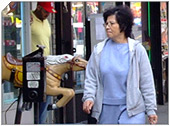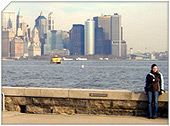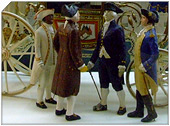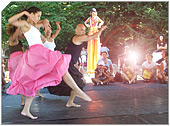South Bronx, The Bronx, New York City
|
Getting Started
Index
NYC Neighborhoods
Manhattan
Brooklyn
Queens
Bronx
Staten Island
NYC Icons
Chrysler Building
Flatiron Building
Empire State Building
Safe NYC
NYPD
FDNY
NYC Weather
NYC Climate
NYC Weather Forecast
Winter Season
Spring Season
Summer Season
Fall Season
NYC History & Politics
New York City History
Tammany Hall and Politics
New York City Politicians
New York City Personalities
Culture of Gotham City
Culture of the city
Cultural diversity
City in popular culture
|
The South Bronx is a region of the New York City borough of The Bronx. It strictly refers to the southwestern portion of the borough, and should not be confused with the southern Bronx. It is also the home of Yankee Stadium.
The "South Bronx" is not a completely neutral term, as it is one commonly associated with urban decay of the 1970s. The terms "Downtown Bronx" and "SoBro" have recently been coined in hopes of replacing this somewhat outdated term for the region, with the latter term "SoBro" meant to conjure Manhattan's more affluent SoHo neighorhood. It is popular for being the birth place of hip hop music and culture.
While the Bronx was considered the "Jewish Borough," which at its peak in 1930 was about 50% Jewish. The term was first coined in the 1940s by a group of social workers who identified the Bronx's first pocket of poverty, in the Mott Haven section, the southernmost section of the Bronx. Originally denoting only Mott Haven and Melrose, the South Bronx extended up to the Cross Bronx Expressway by the 1970s, encompassing Hunts Point, Morrisania, and Highbridge. It was around this time that the Bronx was experiencing some of its worst times ever due to white flight, landlord abandonment and government indifference. Some landlords were motivated to burn their buildings for insurance claims.[citation needed] There was also heroin trafficking. The resultant chaos as related by the media brought the term "South Bronx" into common parlance nationwide.
The South Bronx stretches perhaps further today than it did in the turbulent 1970s; today the neighborhoods of Tremont and University Heights are often considered part of the South Bronx. Some even argue that the Soundview section is part of the South Bronx, or even its eastern neighbor, Castle Hill. The northern limit of the South Bronx is commonly thought to be at Fordham Road. Wherever the South Bronx exactly is, it is thought of as an icon of urban decay, as shown in 1981's Paul Newman film Fort Apache, The Bronx.
Any neighborhood that is not considered the South Bronx is automatically the "North Bronx," even if it lies within the southern portion of the borough, as does Throgs Neck in the Bronx's extreme southeast. South Bronx residents often dislike the term because it obscures the actual neighborhoods in the area. However, it should not be ignored that the heavy reliance on using the region of the South Bronx as a geographic marker over the years has caused the names of its neighborhoods to decline in usage, to the point of residents of Mott Haven and Morris Heights not even knowing the actual name of their neighborhood. Others point out that there is great socio-economic diversity within the neighborhoods that are lumped together under the "South Bronx" heading.
The South Bronx in many ways is more a state of mind than an actual location. Also, the more notable dichotomy in the Bronx is that of the West Bronx vs. the East Bronx; the West Bronx is hillier, less heavily populated, and closer to Manhattan, while the East Bronx is flatter, more residential, and closer to the Long Island Sound. The "North Bronx" designation therefore groups together neighborhoods on opposite ends of the Bronx which have little in common, such as Kingsbridge and Pelham Bay.
It is important to note that the expanded use of the term South Bronx and the thirty years since the coining of the term have brought great changes to the area that it refers to. The South Bronx of today is very different from that of the years gone by; now, it is one of the more calm parts of the Bronx due to the population drop, with a lower crime rate than areas north of the Cross-Bronx Expressway.
|
New York City Search
Quick NYC
|
|
|
 How safe is New York City?
How safe is New York City? Contrary to popular belief, the City consistantly ranks in the top ten safest large cities in the United States. The NYPD is the largest municipal police force in the world and has it's own Movie/TV Unit. |

New York has a humid continental climate resulting from prevailing wind patterns that bring cool air from the interior of the North American continent. New York winters are typically cold with moderate snowfall.  New York Weather Forecast New York Weather Forecast |

New York's two key demographic features are its density and diversity. The New York City metropolitan area is home to the largest Jewish community outside Israel. It is also home to nearly a quarter of the nation's South Asians, and the largest African American community of any city in the country.  Ethnic composition Ethnic composition |

New York Newspapers
 
|



 New York Weather Forecast
New York Weather Forecast
 Ethnic composition
Ethnic composition


















